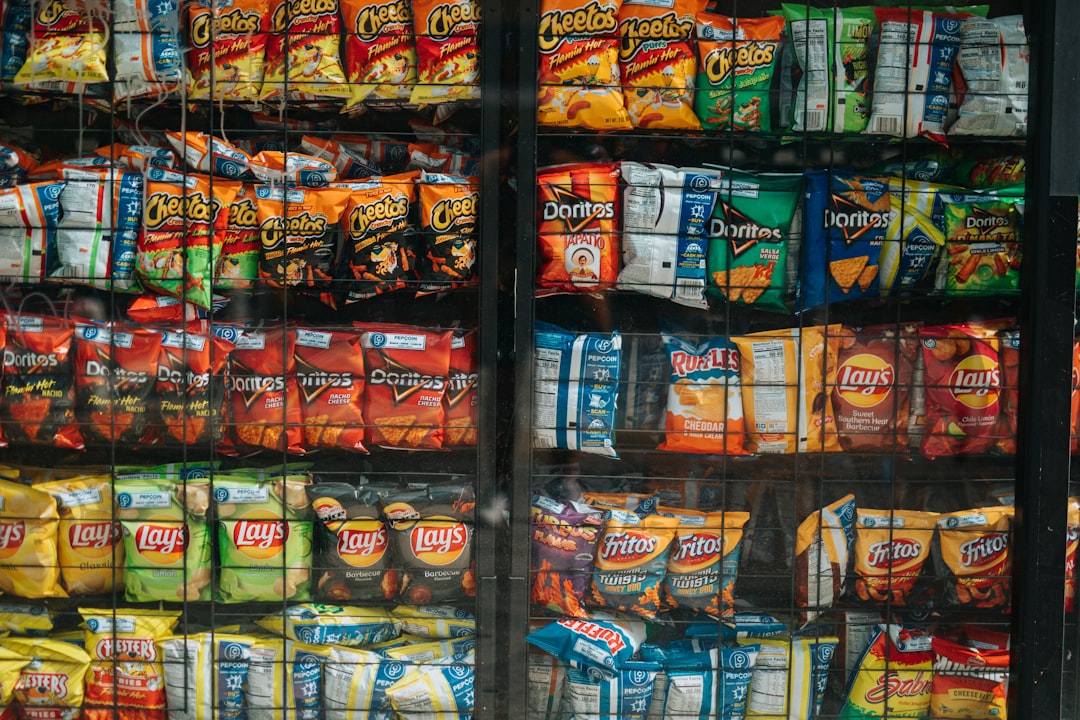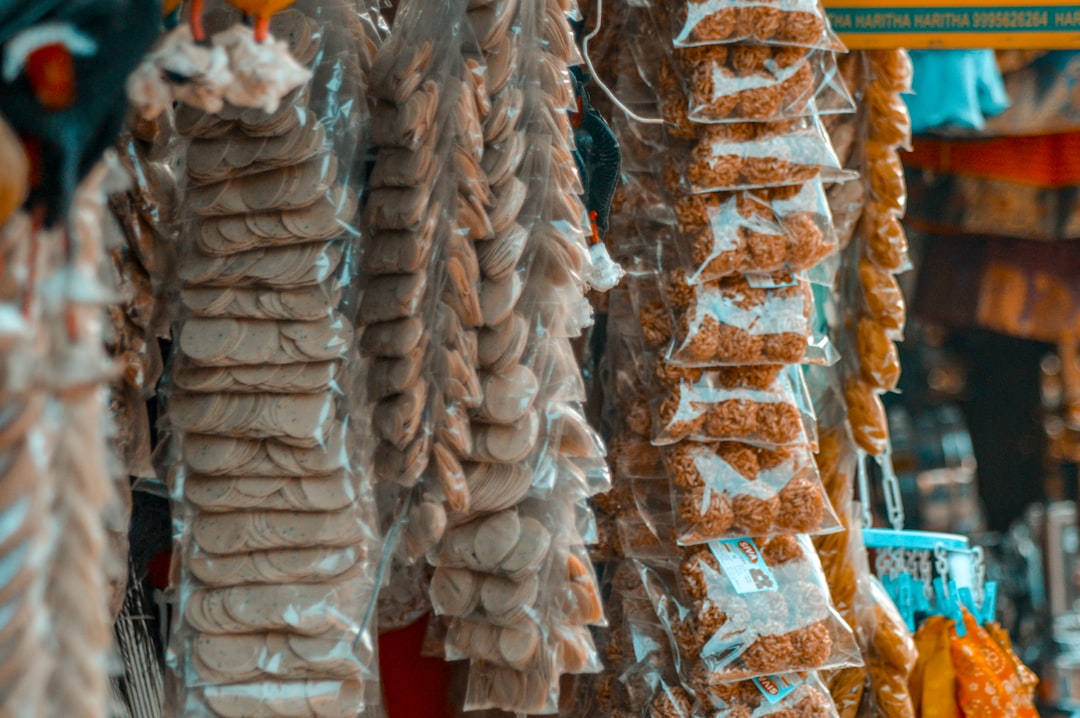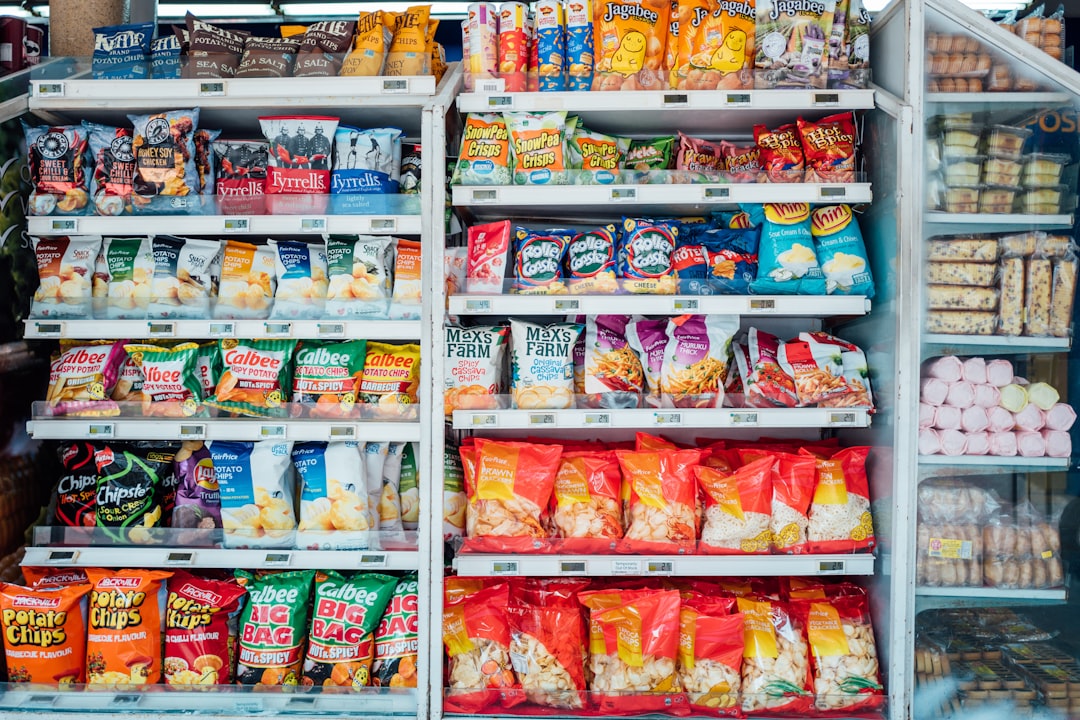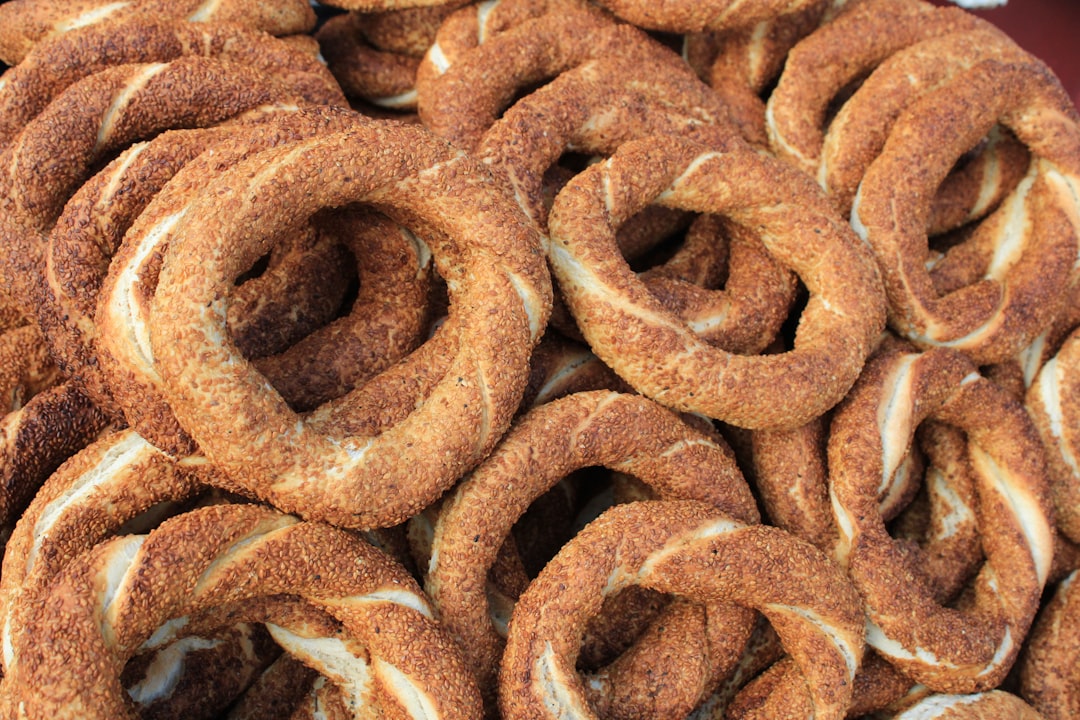

Engage prospects with a scan and streamline customer engagement with FREE QR code marketing tools by Sona – no strings attached!
Create a Free QR CodeFree consultation

No commitment

Engage prospects with a scan and streamline customer engagement with FREE QR code marketing tools by Sona – no strings attached!
Create a Free QR CodeFree consultation

No commitment
QR codes have become an essential tool for freeze-dried food companies seeking to bridge offline engagement with online action. In a competitive market where quality and transparency are paramount, QR codes help drive consumer trust, demonstrate food safety standards, and strengthen brand loyalty without requiring app downloads or complicated onboarding.
By adding QR codes to packaging, freeze-dried food manufacturers can provide immediate access to traceability records, recipes, and certifications. This builds transparency and delivers benefits such as improved recall management, targeted remarketing, and distinct shelf appeal. Traditional approaches often result in lost visibility on engagement, highlighting the need for detailed account-level data to inform segmentation and retargeting.
Adopting QR code solutions allows freeze-dried food companies to transform every product package into a channel for education, engagement, and data collection. This approach uncovers missed cross-sell opportunities, streamlines compliance, and fosters customer-centric growth for industry leaders. On-package food packaging QR codes make these experiences effortless for shoppers.

Freeze-dried food companies face challenges with incomplete customer records and missed engagement signals. Paper inserts get discarded, static labels fall out of date, and product interactions at retail rarely translate into owned customer data. QR codes bridge physical touchpoints and digital outcomes, supporting business goals like enhanced traceability, improved customer trust, and optimized marketing spend. With one scan, shoppers can verify batch details, read preparation tips, and register for replenishment or loyalty programs.
Modernizing the consumer journey starts with replacing analog tasks with digital workflows. Printed brochures and instruction sheets become dynamic recipe hubs. Warranty cards and manual sign-up forms turn into one-tap registrations. Hotline numbers and email addresses convert into prefilled SMS or web forms that capture consent and preference data. When powered by a platform like Sona QR, each scan feeds measurable insights into your CRM, turning moments of curiosity into actionable marketing signals.
Steps to implement QR codes:
This empowers manufacturers to modernize the consumer experience, comply with regulations, and ensure a seamless customer journey. Teams gain more control over messaging at point of scan, and customers gain faster access to trustworthy information without friction. When every pouch and case becomes a digital touchpoint, traceability and engagement start working together to build lifetime value.

Lack of consumer data is a frequent challenge in the freeze-dried food sector, resulting in wasted marketing and unclear ROI. Shoppers often discover brands in-store or during outdoor events, then disappear into anonymity once they leave the aisle. QR codes solve these issues by connecting offline packaging to digital assets, enabling instant access to traceability, certifications, and value-add content that earns permission to follow up.
Static labels often fail to provide up-to-date information, making it difficult to capture account data and target prospects. QR-enabled packaging allows consumers to verify batch data, access recipes, or register at point-of-sale, generating actionable engagement feedback. Dynamic QR codes enable content changes without expensive reprints, which is vital when certifications refresh, supply sources shift, or recipes evolve. With real-time scan tracking, brands gain insights into resonating products or campaigns, connecting physical customer interactions to digital marketing strategies.
QR codes also address trust and safety expectations. Freeze-dried buyers care about ingredient integrity, allergen controls, and shelf-life management. Codes can lead to certificates of analysis, freeze-dry cycle details, and storage guidance tailored to specific SKUs. This transparency reduces support burden, differentiates the brand in a crowded category, and equips retailers with a customer education tool that complements shelf tags and displays.

QR codes offer flexibility for various packaging and marketing needs. The most effective formats for freeze-dried food brands are those that make product verification and post-purchase engagement effortless. Each format can be tied to business outcomes, from compliance to revenue, and managed centrally through Sona QR for version control and analytics.
Focus on formats that align with how and where customers interact with your products. On-package codes should prioritize web links to traceability pages or recipe libraries. Event or sampling codes can lean on forms and SMS for instant sign-ups. Customer service scenarios can use prefilled email or SMS to streamline support tickets and product replacement workflows.
Managing all formats from a unified platform streamlines compliance and customer interaction. Dynamic QR management means you can improve the post-scan experience over time, personalize content by geography or retailer, and avoid costly reprints when destination links change.

Growth is lost when high-potential prospects remain unengaged. Freeze-dried food buyers are often on the go, planning for emergencies, or exploring outdoor adventures. QR codes help bridge offline touchpoints and consumer interest by capturing intent at the exact moment of consideration. They convert one-time purchases into ongoing conversations, subscriptions, and referrals. Real campaigns like the Purina QR promotion show how packaging ties to social engagement and charitable impact.
Start by mapping the physical points where your brand meets the customer. Different placements unlock different behaviors. Primary packaging is perfect for traceability and recipes. In-store displays convert browsers into subscribers. Event booths gather leads and fuel retargeting with context like geography and interests. Each placement builds a first-party data layer that powers smarter campaigns. For packaged goods teams, explore Sona QR’s CPG strategies.
Deploy QR codes on channels where your audience is most active and use the resulting data for personalized experiences. Match the offer to the context. A backpacking expo might feature a Scan to build your 3-day trail menu CTA, while a preparedness event might use Scan to get your 72-hour emergency pantry checklist. The right message will boost scan rates and downstream conversions.

Each contact point should connect to data-driven workflows. When you assign a clear purpose to each QR destination, scans become signals you can act on. A blend of product education, operational efficiency, and loyalty building delivers the strongest results. These use cases also reduce service friction by giving customers the information they need at the moment they need it.
Prioritize use cases that directly influence purchase confidence and repeat behavior. Traceability builds trust and reduces hesitation. Recipe inspiration increases usage frequency and basket size. Post-purchase feedback fuels continuous improvement and gives you consent to keep the conversation going.
These use cases drive consumer confidence, re-engagement, and improved brand perception. When managed through a platform like Sona QR, you can A/B test destinations, personalize content by region or partner, and track ROI by SKU, batch, and channel.
Retargeting suffers without in-depth behavioral data. Scanned QR codes signal intent, context, and stage in the journey, which supports personalized follow-up and improved advertising efficiency. By deploying multiple QR codes across touchpoints, you can segment your audience automatically and use that data to fuel precise retargeting and lifecycle programs.
Think of each scan as the start of a dialogue. A scan on a recipe card indicates interest in meal planning. A scan on a batch label signals concern for quality or safety. A scan at a trade show suggests category exploration. When you tag each scenario, you can tailor content, cadence, and offers to match customer motivations and readiness to buy. For tactics, see Sona’s retargeting playbook.
With advanced QR software like Sona QR, every scan becomes a trigger for personalized retargeting. You can identify repeat scanners, suppress messages for existing subscribers, and measure uplift when you tailor creative to intent signals instead of broad demographics.
Uncoordinated campaigns cause prospect disengagement and wasted spend. QR codes connect offline and digital engagement for freeze-dried food companies by making every printed or physical asset interactive. They let you prove which channels actually drive interest with offline attribution, so you can invest with confidence and shift budget in real time.
A connected funnel often looks like this: a consumer sees a shelf display or social post, scans the code on the pouch, explores recipes, registers for tips, and receives a tailored offer. Each scan deepens the profile in your CRM, and each follow-up reflects what they scanned and where. The result is a cohesive path from introduction to subscription or repeat purchase.
QR codes serve as the offline onramp to your digital marketing engine. They also unlock a new layer of data collection across channels that were once difficult to measure. With a centralized platform like Sona QR, you can manage all your codes, monitor performance, and sync scan data with your CRM and ad platforms for unified reporting.
Executing a QR initiative is straightforward when you anchor it to a clear goal and follow a repeatable process. Whether you are launching a traceability portal, inspiring customers with recipes, or driving subscription adoption, a simple checklist keeps your team aligned and your data clean. For creative execution ideas, see integrate QR codes.
Use the steps below to plan, deploy, and optimize. Each step includes freeze-dried specific examples and practical quality checks to ensure scannability across packaging, signage, and print.
Modern QR platforms simplify each step, supporting scalable, trackable campaigns. By running small tests before major print runs, you reduce risk and create playbooks your team can apply across SKUs, seasons, and channels.
Freeze-dried food companies need more than scan counts. They need visibility into each step of the buyer journey, from the moment a shopper scans on the shelf to the moment they subscribe online. Integrated QR tracking links real-world engagement to digital outcomes, so teams can allocate spend with confidence and prove impact. Tie scan data to outcomes with attribution frameworks like multi-touch models.
With robust analytics, you learn which SKUs trigger the most scans, which retailers deliver the highest conversion rates, and which forms of content drive retention. You can even quantify the ROI of content updates, such as adding video prep guides to the recipe hub or simplifying the registration form. These insights transform packaging into an always-on market research channel.
Sona QR captures real-world engagement at the point of scan. Sona is an AI-powered marketing platform that turns first-party data into revenue through automated attribution, data activation, and workflow orchestration. Sona.com connects those events to buyer journeys and revenue through integrations with HubSpot, Salesforce, Google Analytics, and ad platforms. Start with the HubSpot integration to unify scan signals with your CRM.
Scaling QR impact is about discipline and creativity. Discipline ensures every code has a purpose, is measurable, and ties back to the customer journey. Creativity helps your codes stand out on crowded shelves and at busy events. Pair both, and you will see stronger scan rates, higher-quality data, and better ROI.
Start with a few high-value SKUs and placements, then expand to accessories, shippers, and inserts once you have proven winners. Educate retail partners and field reps on how to encourage scans. Always tell customers what they will get after scanning, and make the payoff immediate.
QR codes on secondary packaging and loyalty integrations deepen data collection and strengthen customer relationships. As your library of scan events grows, use Sona QR to segment audiences and personalize outreach by interests and behaviors, not assumptions.
The freeze-dried food industry is evolving rapidly, and packaging must serve as more than just a container; it is a portal for digital engagement and actionable insights. QR codes empower companies to deliver unmatched transparency, educational value, and customer loyalty, all while generating measurable business results. They help you answer questions instantly at the shelf, nurture interest after the sale, and turn occasional shoppers into long-term subscribers.
Embracing integrated QR solutions enables industry leaders to optimize engagement, gain market intelligence, and reinforce trust, creating lasting value from shelf to screen. Start small with a single SKU and a clear goal, then scale what works across channels and partners. With Sona QR and Sona.com, you can generate trackable codes, monitor performance in real time, and connect scans to revenue so every package becomes a smart marketing asset. Start creating QR codes for free.
QR codes have revolutionized freeze-dried food companies by transforming packaging into interactive, data-driven marketing tools. From enhancing customer engagement to providing instant access to product information and recipes, QR codes help these companies acquire new customers and deepen brand loyalty with every scan. Imagine giving your customers seamless access to detailed nutrition facts, sourcing stories, or exclusive promotions right from the package—turning a simple purchase into an immersive brand experience.
With Sona QR, you can easily create dynamic, trackable QR codes that update instantly without the need to reprint packaging. This means you can optimize campaigns in real time, measure which codes drive repeat purchases, and connect each scan directly to revenue growth. Start for free with Sona QR today and unlock the full potential of your packaging—making every scan a powerful step toward increased sales and lasting customer relationships.
QR codes enhance product traceability, provide instant access to batch details and recipes, improve recall management, enable targeted remarketing, and build consumer trust and brand loyalty without requiring app downloads.
They add QR codes that link to batch-specific landing pages with production lot data, certificates of analysis, recall instructions, and storage guidance, allowing consumers and quality teams to verify product information instantly.
Freeze-dried foods offer extended shelf life, ingredient integrity, allergen control, and reliable storage guidance, making them ideal for emergency preparedness and outdoor adventures.
They provide transparency by linking QR codes to certificates of analysis, freeze-dry cycle details, allergen statements, and sourcing information, reducing support inquiries and increasing consumer confidence.
Innovations include dynamic QR codes that update content without reprints, integration with CRM for personalized marketing, multi-format QR use cases for traceability, recipes, feedback, subscriptions, and centralized management platforms like Sona QR.
By deploying unique QR codes across touchpoints, tagging scans by context, tracking location and timing, and syncing data to CRM and ad platforms for precise retargeting and personalized communications.
They should define business outcomes and target audiences, select appropriate QR code types, design and test codes for readability, deploy across relevant channels, and track and optimize performance using analytics.
QR codes provide instant access to recipes, loyalty program sign-ups, feedback forms, and subscription options, fostering repeat purchases and deeper relationships through personalized offers.
Optimal placements include primary and secondary packaging near nutrition panels or zipper seals, in-store displays, point-of-sale materials, event booths, direct mail campaigns, and digital signage.
They track scan frequency, location, engagement metrics like recipe downloads and subscriptions, conversion rates, and revenue attribution by integrating scan data with CRM and ecommerce platforms.
Use Sona QR's trackable codes to improve customer acquisition and engagement today.
Create Your FREE Trackable QR Code in SecondsJoin results-focused teams combining Sona Platform automation with advanced Google Ads strategies to scale lead generation

Connect your existing CRM

Free Account Enrichment

No setup fees
No commitment required

Free consultation

Get a custom Google Ads roadmap for your business






Launch campaigns that generate qualified leads in 30 days or less.
